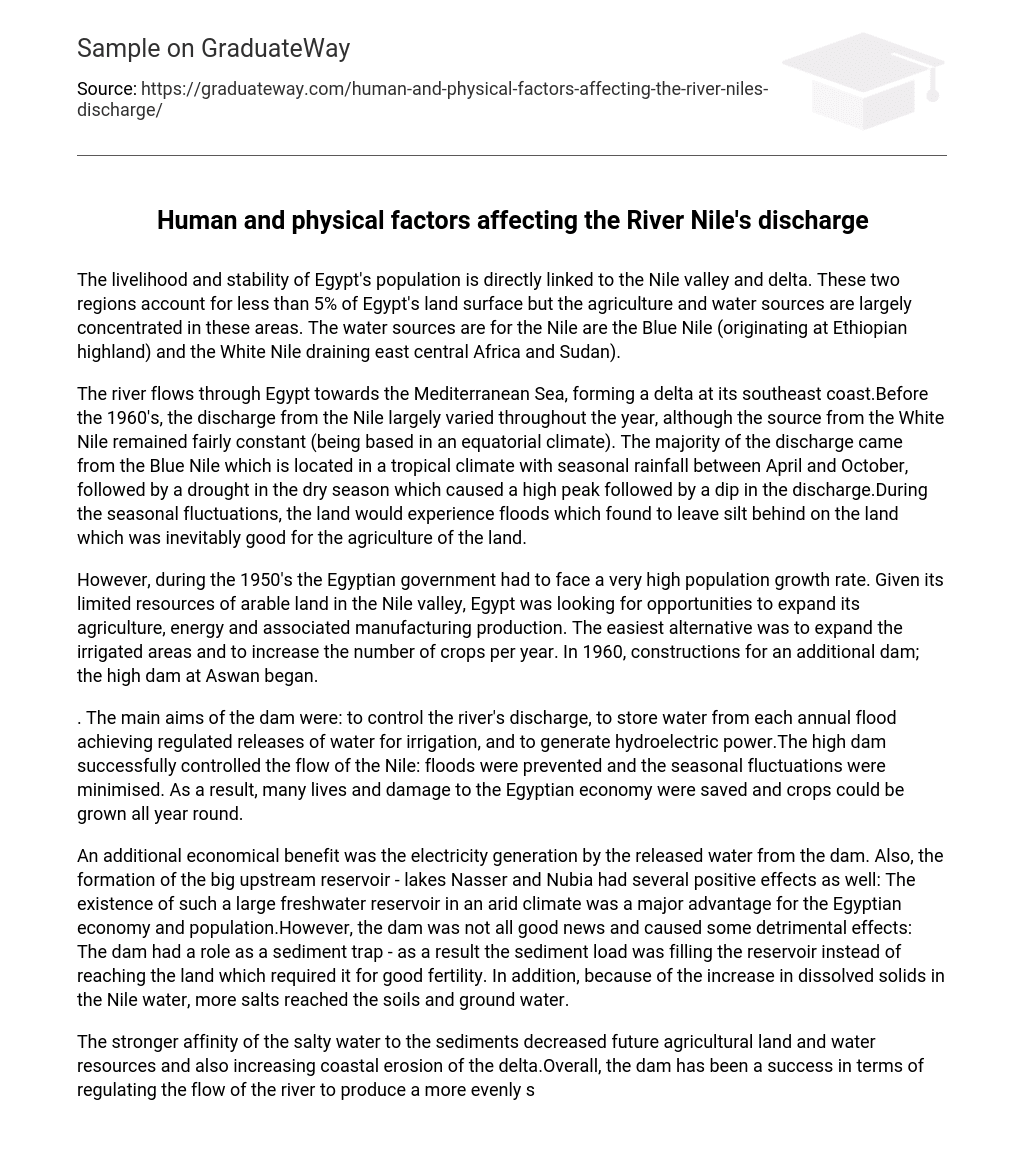The Nile valley and delta are crucial for the prosperity and security of Egypt’s people. Although they occupy a small portion of Egypt’s territory, these regions house most of its farming and water supplies. The Nile’s water originates from two sources: the Blue Nile from the Ethiopian highland and the White Nile that passes through east central Africa and Sudan.
The Nile River in Egypt flows towards the Mediterranean Sea and creates a delta on its southeast coast. Prior to the 1960’s, the Nile had seasonal variations in flow. The White Nile, with its equatorial climate, provided a consistent water source. Meanwhile, the main water source was the Blue Nile, located in a tropical climate receiving rainfall from April to October. This rainy season was followed by a dry period causing a notable increase and then decrease in water discharge. These fluctuations resulted in floods that deposited nutrient-rich silt on the land, which proved advantageous for agriculture.
During the 1950s, the Egyptian government faced a significant population growth rate. Due to limited arable land in the Nile valley, Egypt sought opportunities to expand its agriculture, energy, and manufacturing production. The most feasible option was to increase the irrigated areas and the frequency of crop cultivation. Thus, in 1960, construction began for an additional dam known as the high dam at Aswan.
The main objectives of the dam were to control the river’s discharge, store water from yearly floods for regulated irrigation, and generate hydroelectric power. The high dam effectively managed the flow of the Nile, preventing floods and minimizing seasonal fluctuations. As a result, it helped save lives, prevented damage to the Egyptian economy, and enabled year-round crop cultivation.
The dam provided an additional economic benefit by generating electricity through water release. It also had positive effects from the creation of upstream reservoirs, lakes Nasser and Nubia, which benefited the Egyptian economy and population in an arid climate.
However, the dam had negative impacts as well. It acted as a sediment trap, preventing sediment from reaching the land and affecting fertility. Additionally, it increased dissolved solids in Nile water leading to more salts reaching soils and groundwater.
Although the dam has had both positive and negative impacts, it has effectively controlled the river’s flow, resulting in a more balanced discharge and reduced flooding risk. However, it has also led to a decrease in future agricultural land and water resources and an increase in delta coastal erosion. Despite these challenges, the dam has not successfully improved the agricultural economy to meet the demands of a growing population.





